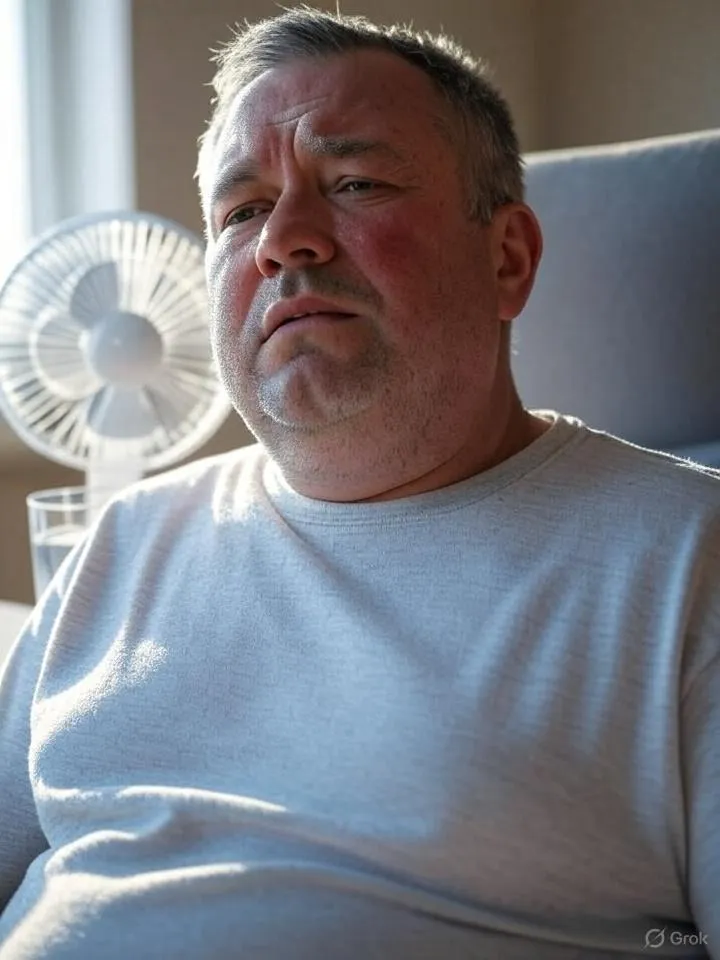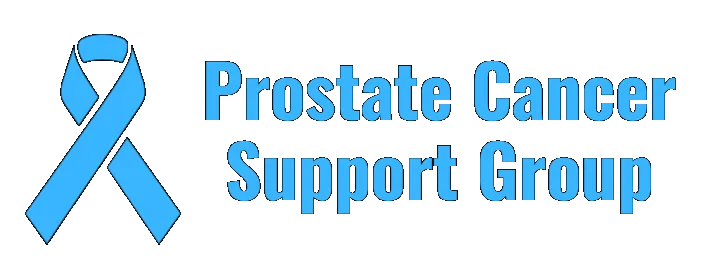Hot Flashes in Men Undergoing Prostate Cancer Treatment: Side Effects and Management Strategies
July 2, 2025, by Coach Brian McCarthy

"In the journey through prostate cancer treatment, hot flashes remind us that even in discomfort, resilience can ignite new strength."
Hot flashes are a common and often distressing side effect for men undergoing certain treatments for prostate cancer, particularly hormone therapy, also known as androgen deprivation therapy (ADT). These treatments, which lower testosterone levels to slow cancer growth, can disrupt the body’s thermoregulatory system, leading to sudden and intense sensations of heat.
This article explores the side effects of hot flashes in men with prostate cancer, their impact, and practical strategies to manage them, drawing on relevant medical insights and your interest in prostate cancer-related topics.
Understanding Hot Flashes in Prostate Cancer Treatment
Hot flashes in men with prostate cancer are primarily caused by treatments like ADT, which includes medications such as leuprolide (Lupron), goserelin (Zoladex), or surgical castration (orchiectomy).
These therapies reduce testosterone levels, which can disrupt the hypothalamus, the brain’s thermostat, leading to sudden warmth, sweating, and flushing, typically in the face, neck, and chest. Approximately 70-80% of men on ADT experience hot flashes, with symptoms ranging from mild to severe and potentially lasting throughout treatment or even years after.
Side Effects of Hot Flashes
Hot flashes can significantly affect quality of life, with physical, emotional, and practical consequences, including:
Sleep Disruption (Night Sweats) - Hot flashes occurring at night, known as night sweats, can interrupt sleep, leading to insomnia, fatigue, and reduced energy levels. About 72% of men report sleep interference due to hot flashes, which can exacerbate daytime tiredness and impact daily functioning.
Emotional and Psychological Impact - The sudden and unpredictable nature of hot flashes can cause anxiety, irritability, or embarrassment, especially in social or professional settings. Men may feel a loss of control, which can contribute to emotional distress or reduced self-esteem.
Physical Discomfort - Hot flashes often involve intense warmth, excessive sweating, and sometimes chills, nausea, or heart palpitations. These symptoms can last from a few seconds to 20 minutes and may require changing clothes or bedding due to drenching sweats.
Impact on Daily Life - Frequent hot flashes can disrupt work, social activities, or exercise, with 59% of men reporting interference with their ability to enjoy life. This may lead to avoidance of certain situations due to fear of an episode.
Other Health Effects - Chronic sleep disruption from night sweats can contribute to mood changes, cognitive difficulties (e.g., memory or concentration issues), and increased risk of depression, which are already potential side effects of ADT.
Strategies to Counter Hot Flashes
While hot flashes may be an unavoidable side effect of prostate cancer treatment, several strategies can help manage their frequency, severity, and impact. These include lifestyle changes, medical treatments, and complementary therapies, tailored to individual needs and discussed with a healthcare provider.
1. Lifestyle Modifications
Identify Triggers: Keep a diary to track when hot flashes occur, noting foods, drinks, or activities (e.g., spicy foods, caffeine, alcohol, or stress) that may trigger them. Avoiding these can reduce frequency.
Stay Cool: Use fans, air conditioning, or open windows to keep your environment cool. Wear lightweight, breathable clothing (e.g., cotton) in layers to adjust easily during a hot flash. At night, use cooling mattress pads or breathable bedding.
Hydration: Drink cold water or keep a flask of iced water handy to cool down during a hot flash. Aim for six to eight glasses of water daily to replace fluids lost from sweating.
Maintain a Healthy Weight: Excess weight can worsen hot flashes. A balanced diet and regular exercise (e.g., walking, swimming) can help manage weight and reduce symptoms.
Stress Management: Stress can increase hot flash frequency. Try relaxation techniques like deep breathing, meditation, or yoga to calm the body and mind.
2. Medical Treatments
Medroxyprogesterone and Cyproterone Acetate: These progesterone-based drugs are often the first-line treatment, reducing hot flashes by 75-91% in many cases. Medroxyprogesterone is typically prescribed at 20 mg daily for 10 weeks, while cyproterone acetate (50-150 mg daily) is an alternative if medroxyprogesterone is ineffective. However, these can increase prostate-specific antigen (PSA) levels or cause other side effects, so discuss risks with your doctor.
Antidepressants: Selective SSRI/SNRI antidepressants like paroxetine (Paxil) or venlafaxine (Effexor) can reduce hot flashes by up to 46% in some men. Side effects may include nausea, dry mouth, or sexual dysfunction, though the latter may be less relevant during ADT.
Oxybutynin: This drug, typically used for overactive bladder, has shown promise in reducing hot flash frequency and severity. A 2024 study found that oxybutynin (2.5 mg or 5 mg twice daily) reduced hot flashes by 4.77-6.89 per day, compared to 2.15 for placebo, with dry mouth as the most common side effect.
Gabapentin: Used for seizures and nerve pain, gabapentin (e.g., 900 mg daily) can moderately reduce hot flash frequency and severity, with minimal side effects like drowsiness or “fuzzy thinking”.
Estrogen Therapy: Estradiol or diethylstilbestrol can reduce hot flashes in 83% of men but may cause breast swelling or tenderness and carry cardiovascular risks. Due to these side effects, it’s less commonly used.
Intermittent Hormone Therapy: For men on long-term ADT, intermittent therapy (stopping treatment when PSA levels are low and resuming if they rise) may provide a break from hot flashes and other side effects, though its efficacy compared to continuous therapy is still under study.
3. Complementary Therapies
Acupuncture: Some studies suggest acupuncture can reduce hot flash frequency by up to 78% in men with prostate cancer, though results vary. It’s generally well-tolerated, with minor side effects like fatigue or bruising.
Cognitive Behavioral Therapy (CBT): CBT, a talking therapy that addresses negative thought patterns, has shown potential in managing hot flashes by reducing associated stress and improving coping skills. The MANCAN2 study in the UK is exploring this further.
Hypnotherapy: Hypnosis may help some men by promoting relaxation and reducing symptom severity, though evidence is limited.
Herbal Remedies: Supplements like black cohosh or evening primrose oil are sometimes used, but evidence for their effectiveness in men is scarce, and they may interact with cancer treatments. Always consult your doctor before trying herbal remedies.
4. Support and Counseling
Joining support groups such as those offered by Prostate Cancer Support (https://www.facebook.com/groups/mensprostatecancersupport), Prostate Cancer UK, or Macmillan Cancer Support, can provide emotional support and a space to share experiences. Coaching, counseling, or talking to trusted friends or family can also help manage the emotional toll of hot flashes and ADT side effects. Your interest in supporting prostate cancer communities suggests these groups could be particularly valuable for connecting with others facing similar challenges.
When to Seek Medical Advice
If hot flashes significantly disrupt your daily life, sleep, or emotional well-being, or if they persist after completing ADT, consult your doctor or urology clinical nurse specialist. They can assess whether your symptoms are related to treatment or another underlying condition (e.g., thyroid issues) and recommend tailored treatments. Be sure to discuss the benefits and risks of medications like oxybutynin or antidepressants, especially if you have conditions like liver disease or a history of blood clots.
Conclusion
Hot flashes are a challenging side effect of prostate cancer treatments like ADT, affecting up to 80% of men and causing sleep disturbances, emotional distress, and physical discomfort.
However, a combination of lifestyle changes, medical treatments, and complementary therapies can significantly reduce their impact. Strategies like staying cool, avoiding triggers, and exploring medications such as oxybutynin or medroxyprogesterone can help, while support groups and CBT offer emotional and practical coping too.
By working closely with your healthcare team, you can find personalized solutions to manage hot flashes and improve your quality of life during prostate cancer treatment.
Note: Always consult your healthcare provider before starting any new treatment or supplement to ensure it’s safe and appropriate for your specific health needs.
Disclaimer
Coach Brian McCarthy is a certified Life Coach but is not a doctor; please consult your own medical team before starting something, stopping something or making changes to your prostate cancer battle plan.
Next Steps
Let us be your beacon of hope during this challenging journey. From emotional support to practical strategies, we tailor our coaching sessions to help you manage the roller coaster of emotions that come with dealing with prostate cancer. Together, we’ll empower you to stay strong, resilient, and optimistic in the face of adversity.
Use the calendar below to book your complementary discovery call on ‘'Hot Flashes in Men Undergoing Prostate Cancer Treatment' or to discuss our coaching services for you and your family.
Don’t wait… your mental well-being matters just as much as your physical health – let us walk beside you every step of the way! – book your FREE conversation to discuss how we can help you today!

